Contrary to what we might see on the latest #yogalife Instagragram hashtag, yoga more than difficult poses and crazy contortions. Quite often the most effective yet challenging postures look simple to the naked eye when practiced with intention. The true gifts in yoga lie in its ability to cultivate awareness that can help us improve the quality of our everyday waking experience.
Benefits of Chair Yoga Sequences
If you find it difficult or impossible to stand or your mobility is restricted, chair yoga makes the benefits of this powerful practice easily accessible. It’s also a great way to take a refreshing break from work without leaving your desk or to prevent stiffness during long periods of travel. For seniors in particular who may have specific concerns about the more challenging postures, chair yoga sequences can help make the practice more accessible. Here are some of the benefits of chair yoga.
Lower levels of stress
Chair yoga retains the synchronization of breath and movement that forms a crucial pillar of any yoga practice. It deepens the breath and resets the autonomic nervous system. This means that it reduces the stimulation of the flight or fight response in the body (the sympathetic nervous system) which is active during periods of stress. Instead, it activates the parasympathetic nervous system which lowers the heart rate and induces relaxation. ¹
Increased mobility and stability
Chair yoga has been found to improve balance and lower-body flexibility. For elderly people with compromised mobility, it can improve their ability to walk and reduce the risk of falling.²
Improved mental clarity and quality of life
By cultivating awareness on the breath through postures, chair yoga improves attention and mental clarity. It has been found to improve the quality of life in patients suffering from Alzheimer’s and other forms of dementia by increasing their mental lucidity. ³
Pain reduction and increased tolerance to pain
Improvement in physical function coupled with the reduced activation of the body’s stress response makes practitioners of chair yoga more tolerant to pain. Studies have found that seniors with osteoarthritis reported a reduction in pain and lower interference of pain in their daily activities. ⁴
Lower fatigue and better sleep
Chair yoga activates the body’s parasympathetic nervous system calming the body and mind and releasing unwanted stress and tension. This promotes better sleep and reduces the experience of fatigue in the body. ⁴
Seated Chair Yoga Sun Salutation Poses
If you’d like to begin your journey with chair yoga and experience these wonderful benefits for yourself, we’ve compiled a safe and easy step-by-step guide to seated sun salutations. In almost every style of yoga asana, the student is first introduced to sun salutations as a way of waking up the body and mind. Sun salutations work on every part of the body, circulating life-giving oxygen and blood. Keep in mind that in all sun salutations– chair sun salutations included, every movement is paired with either an inhale or an exhale. This connection of breath and movement lies at the heart of the yoga practice. Make sure you are breathing deep into the abdominal region.
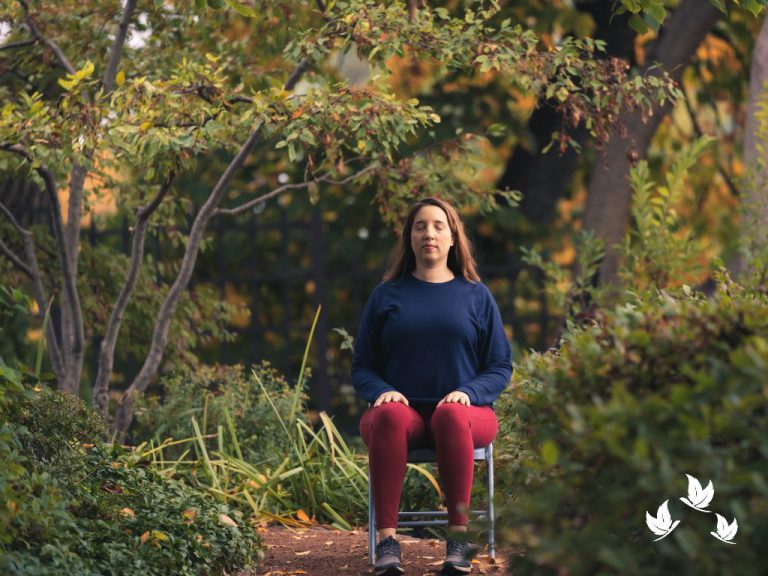
- Seated Chair Mountain
To begin with, place your palms gently on your knees facing downwards. Open your shoulders by rotating them back, and ensure that they are relaxed. Engage your lower abdomen and keep your chest extended forward and up. Ensure that your sitting bones are firmly placed on the chair; remove any excess flesh from under them if required. Place your feet firmly on the ground or on a cushion or stool hip distance apart. Make sure your weight is equally distributed on all four corners of the feet. To protect the knees, ensure that they are always directly above the ankles and the second toe is in line with the knee.
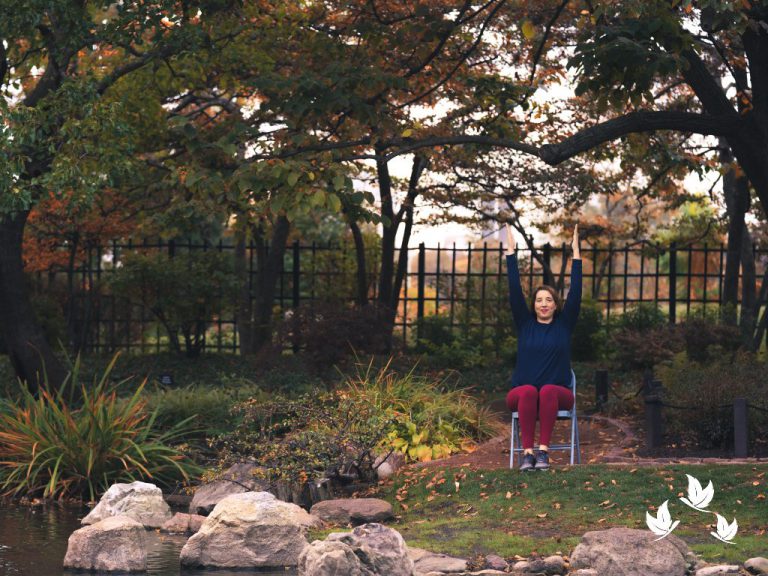
2. Upward Salute (Inhale)
Inhale and lift your arms up overhead. Keep your neck neutral and your shoulder relaxed. Make sure that you’re engaged from the hips up to the neck. Here, you have an option to go into a slight backbend if you like. Gently lift the chest upwards and if it is comfortable for you, tilt the neck back slightly. Feel a gentle stretch in your back from the tailbone up to the neck.
3. Seated forward fold (Exhale)
Exhale and fold downwards keeping your spine as straight as possible. Try to bring your stomach to your thighs and let your hands hang gently over the sides of your knees. If you can, bring the palms to touch the ground. If not, use a bolster or bricks to rest the palms. Ensure that you are holding no tension in the neck. Let it hang loose in between the knees.
4. Halfway Lift (Inhale)
Inhale and lift up halfway. Come up to the tips of your fingers and raise your stomach a few inches above your thighs while keeping your back straight and stomach engaged.
5. Seated forward fold (Exhale)
Repeat as directed in step 3.
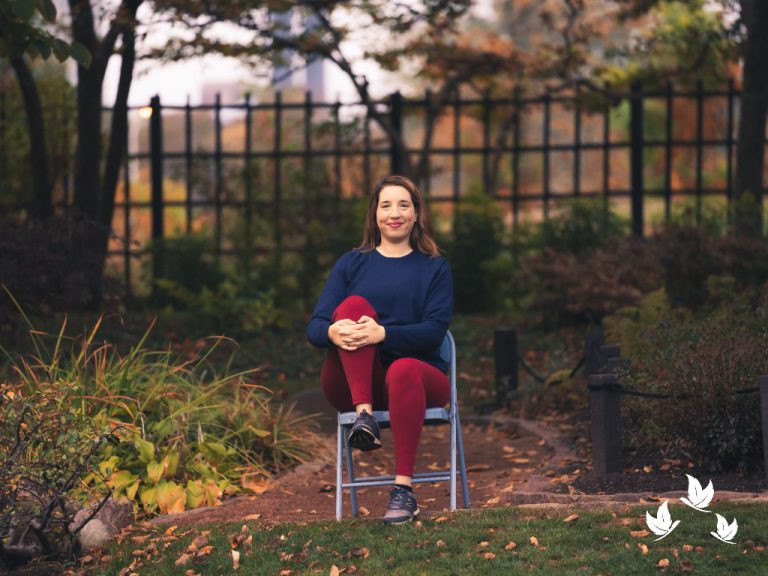
6. Lunge on the right leg (Inhale)
Inhale and clasp your fingers just below the right knee and bring it as close to the right side of your chest as possible. Keep your feet flexed and shoulders relaxed.
7. Seated Downward Dog (Exhale)
Exhale and bend forwards with your arms raised straight overhead. Engage your belly muscles, relax the shoulders and keep your spine straight.
8. Seated Chaturanga (Inhale and Exhale)
Inhale and sit upright with your hands extended in front of you, palms facing away from your body. Keep your back straight and stomach engaged. Exhale and bend your elbows bringing your palms under your chest. Make sure that your elbows and shoulders are in the same line.
9. Seated Cobra (Inhale)
Take your hands behind you and palms resting down on the seat or holding the back of the chair. Extend your chest out and up and if comfortable, tilt your head slightly back to come into a backbend.
10. Downward Dog (Exhale)
Repeat as directed in step 7.
11. Lunge left side (Inhale)
Inhale and clasp your fingers just below the left knee and bring it as close to the left side of your chest as possible. Keep your feet flexed and shoulders relaxed.
12. Seated Forward Fold (Exhale)
Repeat as directed in step 3.
13. Halfway Lift (Inhale):
Repeat as directed in step 4.
14. Seated Forward Fold (Exhale)
Repeat as directed in step 3.
15. Upward Salute (Inhale)
Repeat as directed in step 2.
16.Seated chair mountain (Exhale)
Repeated as directed in step 1.
If you’re doing chair yoga for the first time, start with three to five rounds of sun salutations and gradually add more as you feel ready. Sun salutations can offer a complete seated workout by themselves. You can end the practice by adding a meditation or a breath-work routine. The benefits of yoga will begin to reveal themselves in just a few weeks of consistent practice. Patanjali says that “for those who have an intense urge for Spirit and wisdom, it sits near them, waiting.” Nothing can obstruct a sincere seeker from walking the path of yoga.
References
- Jerath, Ravinder, et al. “Physiology of long pranayamic breathing: Neural respiratory elements may provide a mechanism that explains how slow deep breathing shifts the autonomic nervous system.” Medical Hypotheses (2006): 566-571.
- Mary Lou Galantino, 1,3 Laurie Green,1 Jason A DeCesari,1 Nicole A MacKain, et al. “Safety and feasibility of modified chair-yoga on functional outcome among elderly at risk for falls.” International Journal of Yoga (2012): 146-150.
- Litchke, Lyn G., Jan S. Hodges and Robert F. Reardon. “Benefits of Chair Yoga for Persons With Mild to Severe Alzheimer’s Disease.” Activities, Adaptation and Aging (2012): 317-328.
- Park, Juyoung, et al. “A Pilot Randomized Controlled Trial of the Effects of Chair Yoga on Pain and Physical Function Among Community-Dwelling Older Adults With Lower Extremity Osteoarthritis.” Journal of the American Geriatrics Society (2016).
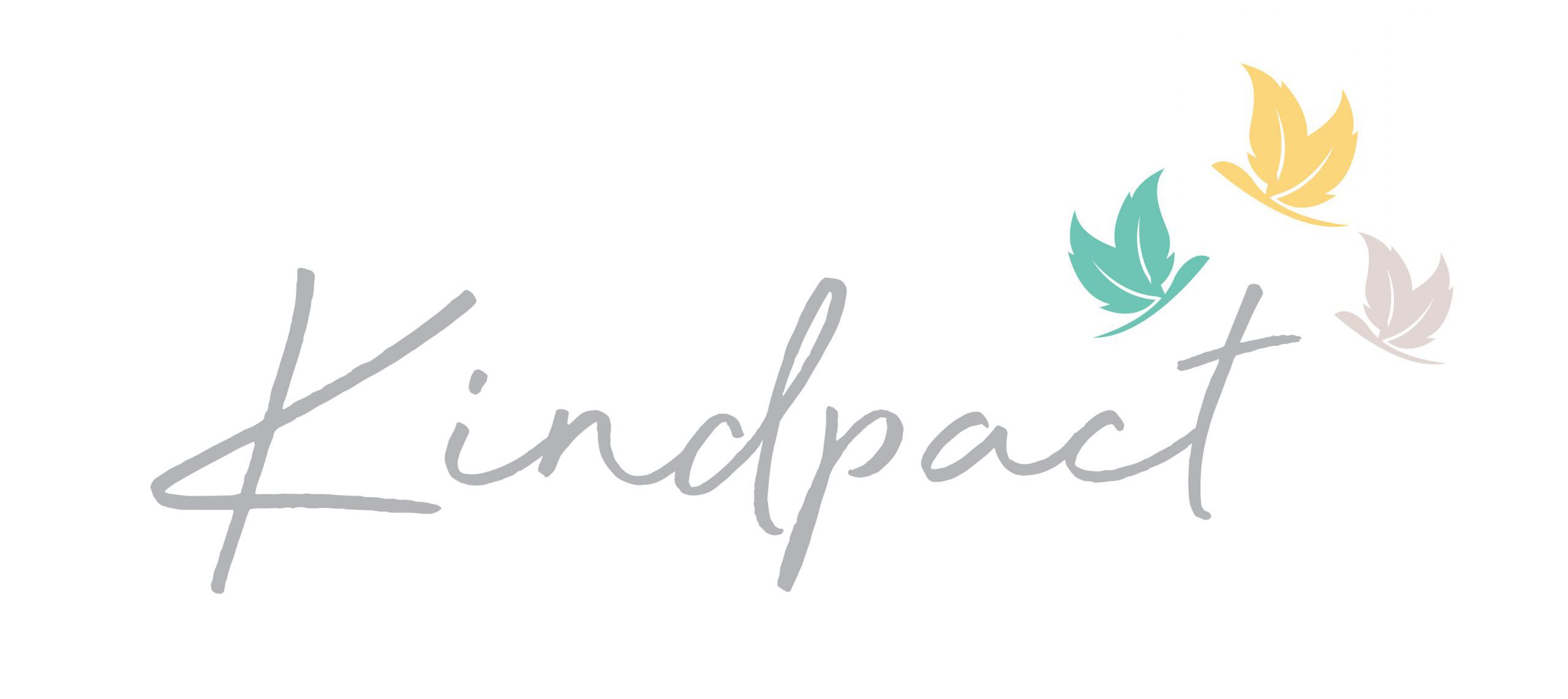
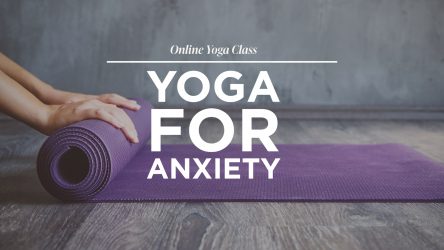
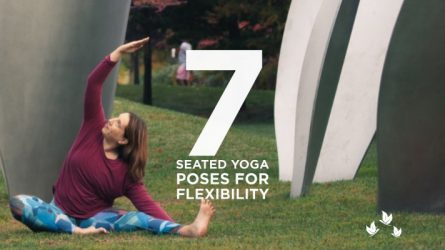
So much valuable info here, and chair yoga is much needed in our communities. Thank you Kindpact!
Thanks! We think so.